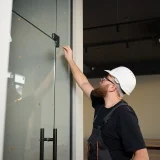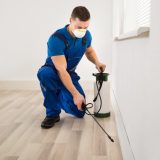Do You Need a Commercial Door Safety Inspection This Year?
Why These Inspections Matter
Commercial doors are heavy, fast-moving systems that rely on springs, cables, tracks, sensors, and motors working in sync. When any one part starts to fail, the door becomes a safety risk. Annual inspections aren’t busywork—they’re the only reliable way to catch mechanical wear, electrical faults, or alignment problems before they turn into shutdowns, injuries, or equipment damage.
Signs You Shouldn’t Ignore
The Door Moves Differently
If the door shakes, drags, hesitates, or makes new noises, something in the lifting system is wearing out. Springs weaken, cables stretch, rollers flatten, and tracks go out of alignment. These issues escalate quickly.
Sensors Aren’t Consistent
Safety beams and contact edges are supposed to react instantly. Any delay—slow reversing, false stops, or failures to detect movement—means the system is out of calibration. That’s a direct liability problem.
The Motor Struggles
A commercial operator shouldn’t strain or overheat during normal cycles. Increased vibration, slow startup, or inconsistent stopping points usually point to internal electrical or mechanical faults.
Visible Wear or Damage
Cracked panels, bent tracks, rusting hardware, and loose fasteners aren’t cosmetic issues. They’re indicators of stress on the entire system.
What an Annual Inspection Actually Does
Verifies Mechanical Safety
Springs, cables, hinges, bearings, and rollers are checked for signs of fatigue. These parts fail violently when worn, so confirming their condition is a priority.
Confirms Correct Alignment
If the door isn’t tracking perfectly, the load shifts unevenly and accelerates wear. Inspections catch misalignment before it damages the operator or derails the door.
Tests All Safety Devices
Sensors, auto-reverse systems, emergency releases, and fire-rated components are tested deliberately—not assumed functional. This is one of the most important parts of the entire process.
Evaluates the Operator System
The motor, controls, limit settings, and wiring are inspected to make sure the operator responds consistently and shuts down safely when required.
Provides Documentation
Most businesses need proof of inspection for insurance, regulatory compliance, and internal safety records. Skipping documentation puts the company at risk during audits or claims.
Why an Annual Inspection Is Usually the Minimum
Commercial doors cycle far more than residential ones. Warehouses, loading docks, service centers, and retail facilities operate doors dozens or even hundreds of times a day. High-cycle use magnifies wear and reduces the margin of error. Once a year is the industry baseline, and many high-traffic environments require semi-annual checks.
When You Should Schedule One Immediately
You shouldn’t wait for the annual date if:
- The door hit an object.
- Someone bypassed or disabled sensors.
- The operator was replaced or adjusted recently.
- A cable, spring, or hinge shows visible stress.
- The door behaves unpredictably.
Delaying inspection after any of these situations increases the chance of a critical failure.
A Practical Example
Companies needing a structured, standardized process often turn to professional services such as a Door Doctor commercial door safety inspection, because trained technicians evaluate every component, test all safety systems, and document results thoroughly. The point isn’t branding—it’s expertise and consistency.
Bottom Line
If your facility relies on a commercial door daily, you need a safety inspection this year—period. Mechanical wear, electrical faults, and sensor failures build up silently, and the longer you wait, the more dangerous the door becomes. Annual inspections protect employees, prevent downtime, and keep your business compliant.















